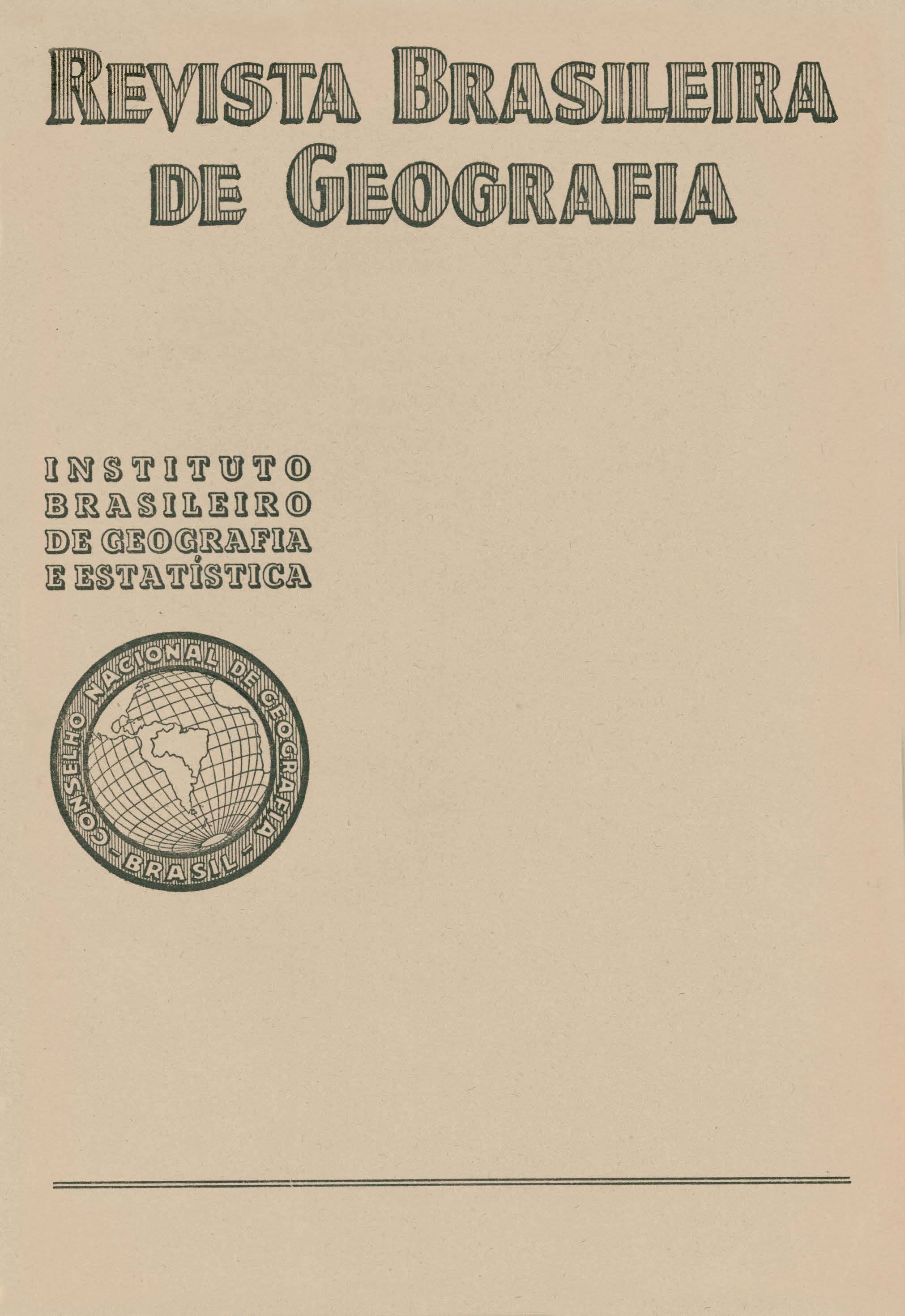A Morfogênese do litoral catarinense
Abstract
The author, formerly professor of geography and a thorough connoisseur of the aspects of the southern part of the country where he has travelled frequently, submits a study on the morphogenesis of the coastal region of Santa Catarina.
From the begining he :reviews the successive geological periods in southern Brazil from the late carboniferous, in which the crystalline peneplain extended eastward far beyond the present shores (there was not the Atlantic Ocean), to the late triassic. At this time there occurred the outpouring of great floods of basic lavas which covered not only the old crystalline peneplain but also the sedimentary layers deposited during the permian and the triassic. The author points out that during this phenomenon there were no orogenic movements either vertical or by folding.
During the jurassic the whole southern part of the country would be a great plateau covered by a thick cap 0f basic eruptives in the·length of approximately 900,000 km.
This was the starting point for the present forms of the coast zone of Santa Catarina. which were produced by earth movements divided into three successive stages: curvatures or folds slightly marked with their axis in a east-westernly direction, a general dip of permo-triassic layers from east to west and vertical movements with formation of fissures.
The folds, as evinced by the differences of level which are found at the base of the permian sediments (Itararé series), have formed a southern syncline, in the present lowland of Tubarão river, a central anticline, on the axis of the Taboleiro and Boa Vista flat topped mountains, a northern syncline, in the present valley of Itajaí, and a northern anticline in the rio Negro plateau. The river Itajaí-Canoas originated in the northern syncline and the Tubarão-Pelotas did so in the southern syncline, both rivers running westward. Such folds are possibly associated with the folding of ventana and Tandil hills in Argentina, formed at the end of the triassic.
The westward dip of the layers would have been marked in the cretaceous with a lowering of the western part which resulted in a deposition of the sediments of the Baurú series in São Paulo.
The vertical movements, which took place in the whole eastern part of Brazil, were a reflexion of the gigantic folding of the Andes. Then occurred the dislocation of the continental bridge which connected Africa to South America or, according to Wegener, the separation of the two continents. Such movements have radically changed the morphology of the coastal region in Santa. Catarina.
The author admits various displacements by great blocks. The fault in the whole band toward the eastern coast has only caused the highest summits to continue to emerge, as in the case of the Santa. Catarina island located in the central anticline.
Another important dislocation would have occurred on the band west of the present coast with the production of faults the principal of which would be Serra Geral, a magestic escarpment of the plateau. on the eastern part of this plateau the author admits the formation of "grabens" and gives as an example a "graben" en echelon along the upper Pelotas river.
As a consequence of such a morphologic change the author studies the remodelling of the new coast largely jagged to the north of parallel 28°, whilst to the south it is found smooth with coastal sand banks or shelves ("restingas") and lagoons. He does not admit a negative eustatic movement for the formation of coastal plains because he finds no convincing proofs of the fact.
Another · important consequence was the formation of a new potamographic system in the coastal region, for the displacement would have been stronger to the east than to the west giving rise thus to a general declivity opposing to the previmitive slope.






